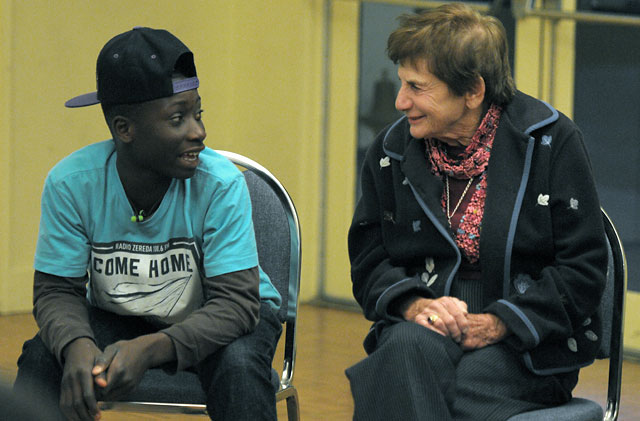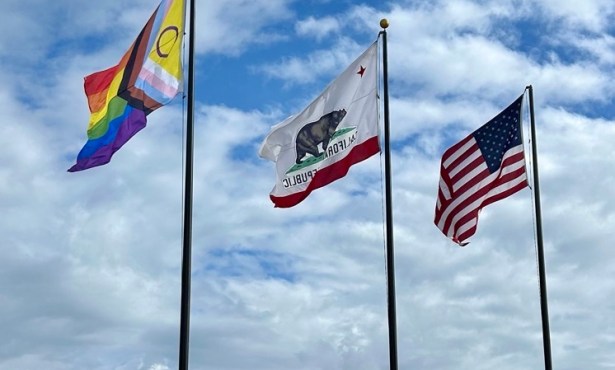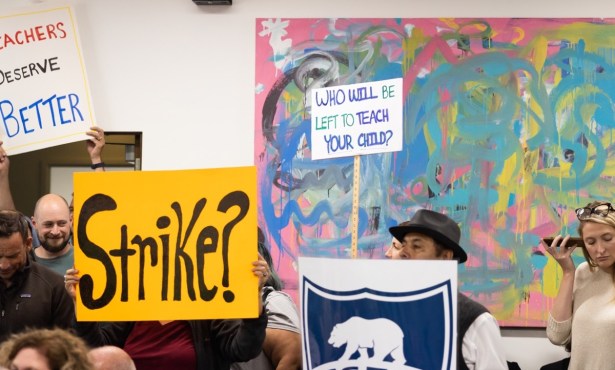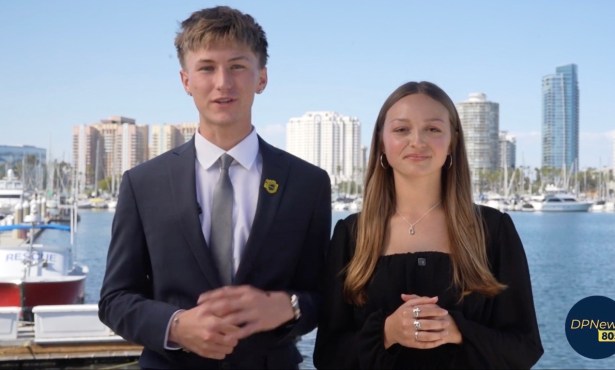Survivors, Young and Old
“My Three Faces” Connects Youth to Holocaust Refugees

The scene is downright cinematic. Due to increasing Nazi persecution, Julie Heyman is about to flee her hometown of Danzig, Germany, but her parents make her go to a previously scheduled afternoon violin recital so as not to invite suspicion. The 12-year-old Jewish girl performs, quivering, in front of her schoolmates before embarking on a four-year odyssey that will take her to Poland, Switzerland, Belgium, France, across the Pyrenees to Spain, and, eventually, the United States. She is telling this story to a circle of teenagers occupying the Unitarian meeting hall on Anacapa Street as a handful of yogis — scheduled for the next time slot — impatiently wait outside, clutching their yoga mats.
For 11 weeks from October to December, 13 at-risk teens met at the Unitarian Church with Holocaust survivors in order to learn about resilience. This program, called “Mis Tres Caras/My Three Faces/Shalosha Panim,” has been administered by the Jewish Federation the past few years but recently became a collaboration with the Academy of Healing Arts (AHA).
AHA Program Director Isis Castañeda explained that one of the primary goals of AHA — and “My Three Faces” — is to teach adolescents emotional intelligence, “the ability to identify your emotions and to manage them in a healthy way.” Leaving nothing to chance, she ensures that the interactions between teens and survivors lead to educational experiences. After hearing a story, the youth always individually thank the tellers for sharing with them, and then point out an element of the tale that made an impression on them.
After Heyman — not only a Holocaust survivor but the first female Peace Corps training officer— recounted her tale, her audience pointed out details that are unsurprisingly poignant to young people. One boy who noted that Heyman’s schoolteacher ostracized her, the only Jew in her class, commented that “teachers are supposed to be good.” Another was taken by Heyman’s memory of coming home one day to find that her parents had disappeared. She would later learn that they had been jailed.
To help process the stories they heard, the teens completed art projects symbolizing their own life journeys and made from supplies gathered at Art From Scrap. These projects suggest that, for all of the challenges they have faced, those participating in AHA are amazingly self-aware. One young woman in the 10th grade who wants to work in social justice sculpted a rose growing out of the detritus of her past, including gauze to symbolize pain and pill bottles referencing her substance abuse.
Genesis Sarmiento, who immigrated from Mexico when she was 5 years old and returned in the 5th grade only to come back a year later, explained, “The survivors didn’t want to separate from their families, but they knew it was for the best.” She incorporated both Mexican and American flags into her art project.
Natryce Robinson, 14, sculpted a rocket ship with a window through which viewers can see a toy panda bear that, she says, represents herself waiting for her life to take off. She said that “My Three Faces” confirmed a lesson she often receives at home. “My mom always told me that when you think you have it bad, somebody has it worse.”



